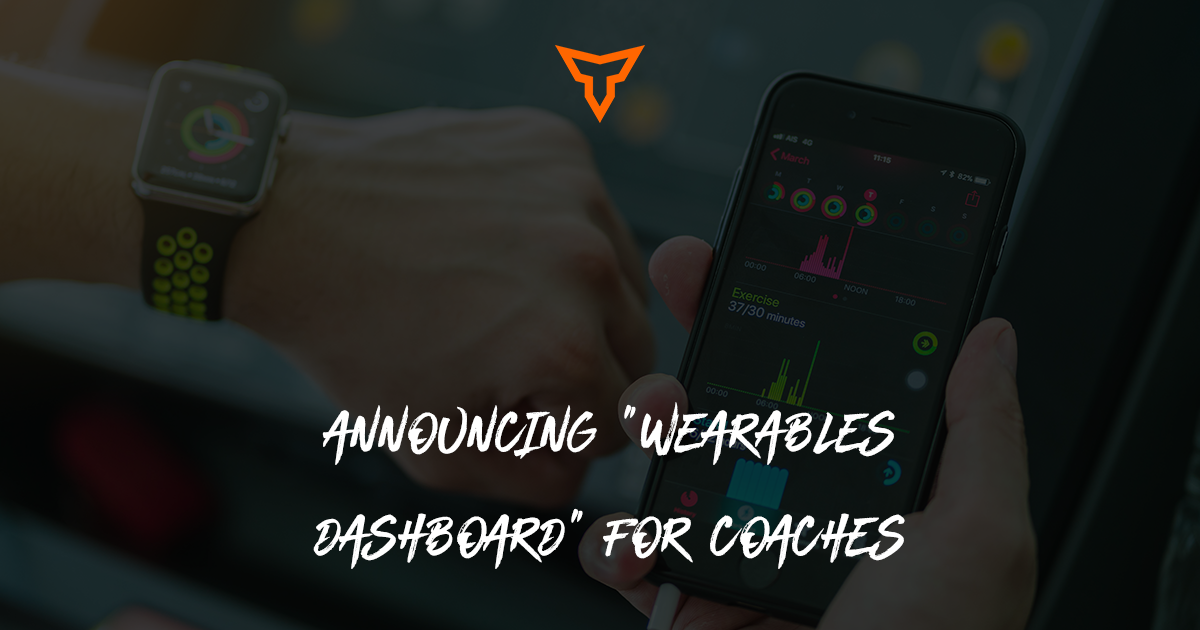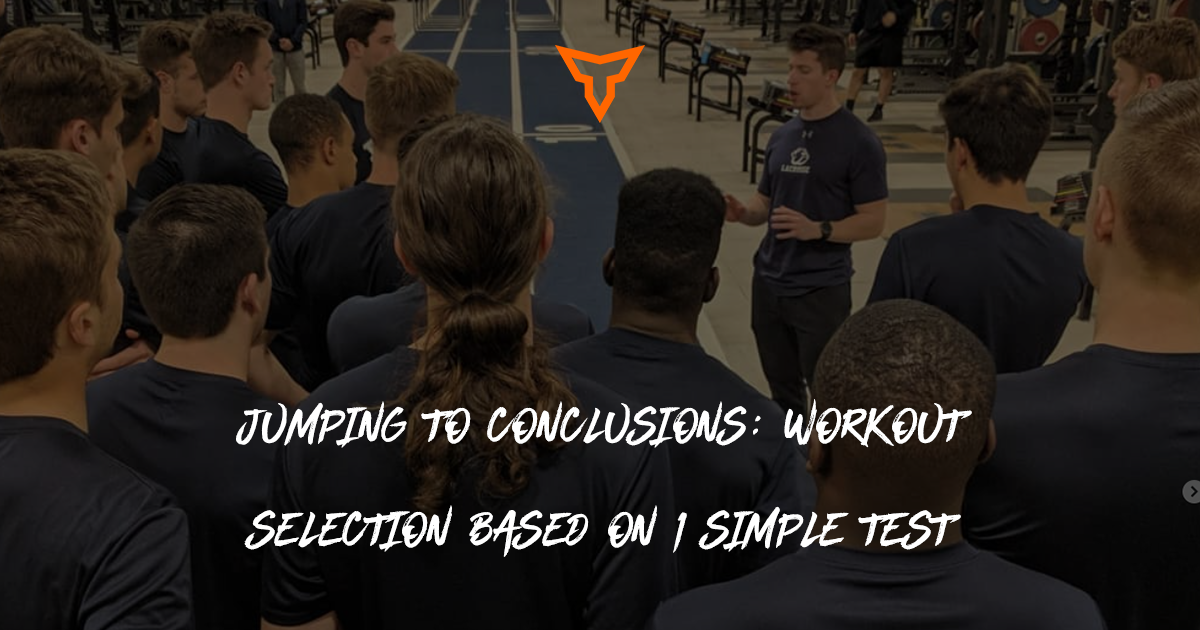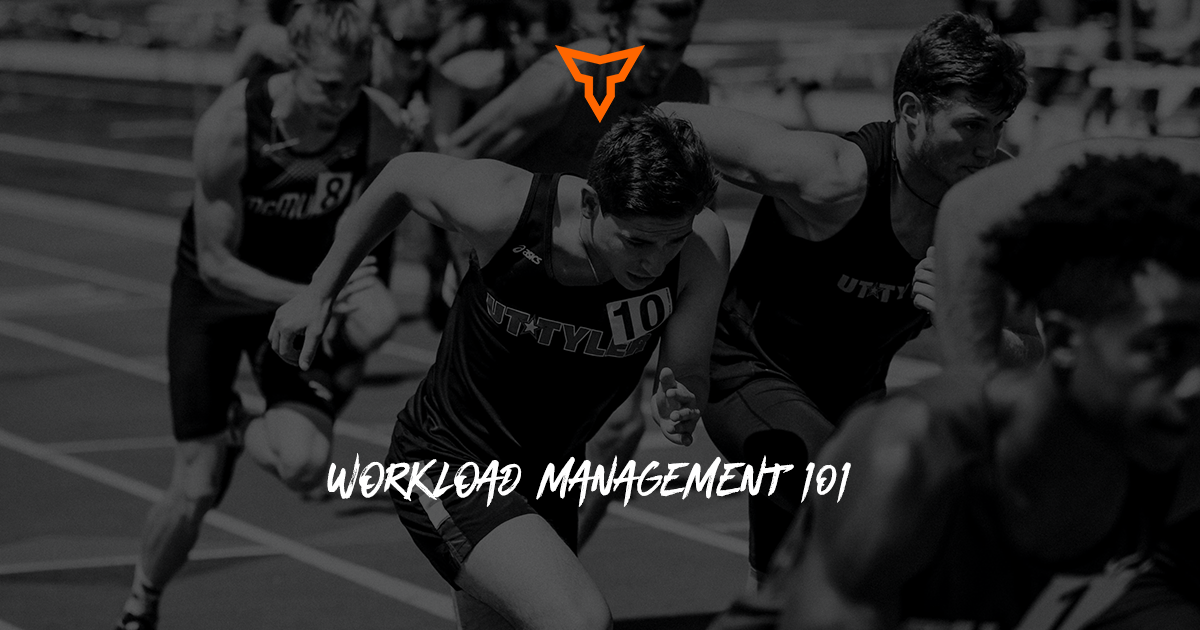Autoregulation Starter Pack
Author Brian Szutkowski is a staff member at TeamBuildr in addition to his role as a performance coach specializing in track and speed development.
Autoregulation is a buzzword just like holistic approach is nowadays. But what does either of the two terms mean? What we should look for from either of the two is the ability to be fluid with not only exercise selection and programming but also the max or weight to be lifted subjective to the athlete on a given day due to a variety of factors in order to get the most out of the training session while still mitigating plenty of risk to the athlete and optimizing that “sweet spot” of the day. In all reality, there are going to be plenty of days athletes are burnt up and other days where they are firing on all cylinders, and there are plenty of ways of determining where the athletes you train fall on that spectrum on any given day and making plans to coincide with them. These include but aren’t limited to:
1. Practice
- Duration (Volume)
- Density (Rest)
- Intensity (Speed or Effort of the individual)
2. Outside Factors
- Sleep
- Quality
- Duration
- Stress
- Work
- School
- Relationships
- Home Life
- Attitude
- Perceived readiness
- Objective readiness
Now the last two on the list can be extremely expansive, but there are a variety of ways to not only define them but understand them better and how to look for the answers.
Perceived Readiness
This is how the athlete feels meaning, no matter what the objective results are, if the athlete by all means doesn’t trust the results or is not feeling great due to any of the factors listed above or others, they just might not be ready.
One way to do this? A readiness questionnaire to make a compiled score.
Objective Readiness
Objective readiness is taking testing procedures or biometric data and comparing it to a baseline for the individual. This takes more resources, but likely will give the most concrete answer. Before I detail the options, I want to preface that there are obviously other ways to do this, but the idea remains the same; collect responsive, objective data where the testing procedure is quick and requires minimal to no technical aspect and provides minimal risk to athletes with low readiness to which you can modify a workout with either reps, weight (+/- 5-10% of weight/reps). A couple of the ways to do this are:
- The Teambuildr wearables integration/dashboard, taking a 7 day rolling average for the individual and creating a composite score of the heart rate zones/time in each, resting heart rate, heart rate variance, sleep and compiling it into a exertion score relative to the individual to present a perceived readiness based off of the exertion from the day before. (Note: other wearables/apps can also do this such as oura for an additional cost to the user)
- Jump Mat Testing - Using a jump mat or force deck to baseline a hands free counter movement jump. Creating a baseline or rolling average for the athlete and comparing the day's jumps within a standard deviation or 2 from the baseline.
Finally, the use of different training protocols will allow you to autoregulate to the readiness or preparedness of the specific athlete. Depending on knowledge, training age, and of course, budget, some may be more appropriate than others for the environment. Pick one you can implement and scale.
1. RPE/RIR
Using Reps in Reserve/Rate of Perceived Exertion is a great way to autoregulate the loads prescribed for the day in respect to the athletes’ subjective readiness. The use of either is to have the athlete select a weight they believe they are capable of that day instead of prescribing a hard number from a 1RM or 3RM. A good example is choosing 5RIR or 5 RPE for a set of 5. So in theory, the athlete will choose a weight they will likely be able to complete 10 difficult reps with, but only do 5. And I know many will say, “what if they under shoot the weight?” Well, this is one coach's opinion, but I’d rather go to light, work towards the speed end of the spectrum and undersell “strength” then overshoot it, stick to a concrete plan and injure an athlete.
2. Tendo Units/Bar Speed Trackers
Units such as VMax Pro, Perch, Vitruve that can allow the athlete to find a maximal load to get the desired stimulus. This may be more expensive, and requires a better understanding of the Force/Velocity Curve, and may take additional time setting up. But, it will get the desired results and objective numbers for the stimulus instead of the “feel”. The external feedback along with these trackers will also drive intent to move the bar fast. The drawbacks obviously are cost/possible set up time.
3. Training Menus
This takes far more planning but it takes most of the workout of the athletes hands and minds. The idea is to have 2-3 workouts, (I would choose Blocks since I like to prescribe every day strength or every day accessories). And then allow the results or scores from one of the readiness tests to dictate if you need to choose plan B or even C for the athlete if their results dictate that. This obviously is one of the most difficult of all and will likely require additional coaches, time for preparation. However it can be done.
Hopefully this can help create a more holistic approach to your teams' training and prepare them in a manner that will fluctuate with the athlete and allow them to prepare for their sport safely and effectively as possible to create a high performance program.
Subscribe to our blog
Subscribe to receive the latest blog posts to your inbox every week.
Related posts

Announcing Our 'Wearables Dashboard' for Coaches

Jumping to Conclusions: Workout Selection Based on 1 Simple Test


